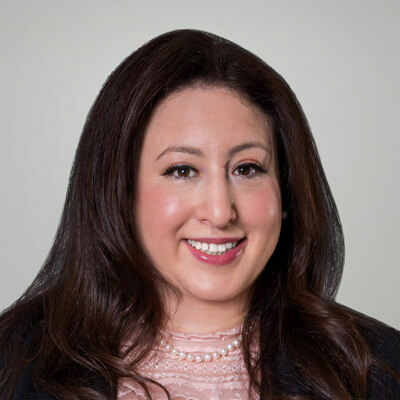Originally Published in

April 20, 2018
By Stephen Vorvolakos, Ariel Property Advisors
Read The Article on Brooklyn Daily Eagle
Sales of investment properties in Brooklyn are holding firm in 2018, with a notable increase in bidding activity and requests for asset evaluations indicative of a market that is on much stronger footing than a year ago. The borough’s Lower West region has captured the interest of investors, although altering retail landscapes has some neighborhoods faring better than others.



(From left to right) Aaron Warkov, Salesperson - Investment Sales; Stephen Vorvolakos, Salesperson - Investment Sales; and Arriann Weiss, Analyst - Investment Research, Ariel Property Advisors
Lower West Brooklyn – which encompasses Sunset Park, Greenwood Heights, Gowanus, Park Slope, Boerum Hill, Carroll Gardens – has been a haven for investors for a multitude of reasons. The region’s closeness to Manhattan and Downtown Brooklyn is undoubtedly a major draw.
While other Brooklyn neighborhoods that rely on the L-train face uncertainty next year when it closes for 18-24 months, Lower West Brooklyn will be largely unscathed due to its copious transportation options. In fact, the closure of the L-train could spur population growth in the region, which would raise property values.
Meanwhile, New York City as a whole has seen a decline in brick-and-mortar retail demand due to the rise of e-commerce. As retailers get priced out of Manhattan and Downtown Brooklyn, they have increasingly set their sights on Lower West Brooklyn for affordable space. Therefore, for owners and investors to make informed decisions about Lower West Brooklyn’s real estate market, it is imperative for them to take a close look at the performance of retail within each of its neighborhoods. Many owners may be surprised to learn just how much the changing retail landscape has affected the value of their property.
Lowdown on Lower West Brooklyn’s Retail
Lower West Brooklyn’s Sunset Park and Greenwood Heights have been a strong focus for investors, due largely to its huge industrial waterfront, spectacular hillside views of Manhattan, and rapid population growth. As technology/advertising/media/ information (TAMI) office development continues, many of the employees inhabiting these spaces have chosen to reside nearby, fueling a need for more retail stores and amenities. Recently, the Brooklyn Nets’ practice facilities, Bed Bath & Beyond, Saks Off 5th, Five Borough Brewing Company, Brooklyn Kura Sake Distillery and World Market have planted their flags in the area.
The surge in demand for retail space in Greenwood Heights is evident in the metrics. From January 2016 to the first quarter of 2018, retail vacancy rates in the neighborhood dropped from 1.1% to 0.5% and average rents increased from $28 per square foot in certain areas to $63 per square foot in others, according to CoStar.
During this same period, Sunset Park’s retail vacancy rate fell from 2.1% to 0.6% and average retail rents rose from $40 per square foot to $49 per square foot. Strength in Sunset Park’s retail and mixed-use sector speaks volumes, with the average price per square foot appreciating 50.4% to $603 per square foot and transaction volume climbing 35.7% to 19 sales, according to Ariel Property Advisors’ Investment Research Division.
The opposite side of the retail spectrum is in Gowanus, where the vacancy rate surged from 1% in 2016 to 8.3% in the first quarter of 2018. This increase can be attributed to owners’ hesitation to sign long-term leases because of potential mixed-use rezoning. Owners have chosen to leave their retail spaces vacant or renew only on a short-term/monthly basis to take advantage of the potential rezoning.
Nevertheless, Gowanus is in the midst of a transformation that should increase retail and mixed-use property values over the long term. In fact, real estate developers, restauranteurs and artists are turning the once working-class neighborhood into a trendy hot spot that is comparable to Williamsburg just ten years ago. Retail rents rose from an average of $50 per square foot in 2016 to $67 per square foot in the first quarter of 2018. New multifamily developments like 363 & 365 Bond Street, 237 11th Street & 251 1st Street are greatly contributing to the need for amenities in the area, such as Whole Foods, Royal Palms Shuffle Board, Dino BBQ & Ample Hills Creamery.
Park Slope, meanwhile, saw a mere 1% rise in its retail vacancy rate, while Boerum Hill remained stable during this time span. These family-friendly neighborhoods, comprised of many landmarked residential brownstones, busy retail corridors, parks and schools, have shown similar trends, with rental rates decreasing slightly. Carroll Gardens, which mirrors the same amenities, saw vacancy rates rise from 1.6% to 2% and rental rates jump from $50 per square foot in certain areas to $74 per square foot in others.
In Red Hook specifically, lack of transportation has always been an issue for the waterfront neighborhood, but the robust growth in surrounding areas has made an impact on retail values. Since 2016 the vacancy rate has stayed flat, while rental rates dropped from an average of $48 per square foot to $30 per square foot.
Despite this recent change, there are several long-term reasons to be optimistic about Red Hook. Governor Andrew Cuomo directed the MTA to consider constructing a new subway line from Red Hook to Manhattan, and he asked the Port Authority to relocate the Red Hook Terminal to Sunset Park to free up waterfront space. The BQX streetcar is another proposal that could help Red Hook’s transportation issues. Those who invest prior to its implementation face a substantial increase in property values.
Looking ahead, Brooklyn’s investment sales market is rebounding in the aftermath of last year’s sluggishness. As the economy continues to improve and buyers get priced out of the other neighborhoods in the borough, stability in retail-driven assets in most Lower West Brooklyn neighborhoods should continue to attract the attention of investors and end-users.
More information is available from Stephen Vorvolakos at 212.544.9500 ext.25 or e-mail svorvolakos@arielpa.com.